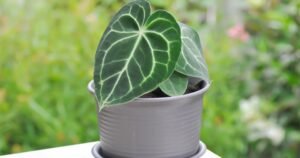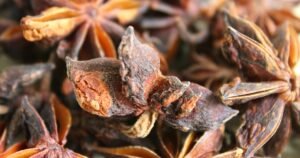Plants with long, skinny leaves are a fascinating group of botanical specimens that exhibit distinct characteristics and adaptations to their environments.
Houseplants like the spider, dracaena, ponytail palm, and snake plants exhibit elongated and slender leaves. Some succulents also possess extended, albeit succulent, foliage.
A Closer Look at Their Characteristics and Adaptations
These leaves come in various shapes, sizes, and textures, each serving a specific purpose in the plant’s lifecycle.
This exploration will explore the anatomy, functions, and evolutionary advantages of long, skinny leaves in different plant species.
Understanding these adaptations can illuminate the intricate relationship between plants and their habitats, providing valuable insights for botanists and nature enthusiasts.

Anatomy of Long, Skinny Leaves
Long, skinny, or linear leaves are characterized by their elongated and narrow shape.
Their length can vary significantly, sometimes exceeding the height of the plant itself.
Conversely, the width remains relatively constant or only slightly widens from the base to the tip.
This unique leaf morphology contributes to the overall appearance and functionality of the plant.
Leaf Structure
The structure of long, skinny leaves typically consists of three main parts:
- Blade: The central, flat portion of the leaf that captures sunlight for photosynthesis.
- Veins: The vascular system of the leaf, responsible for transporting water, nutrients, and sugars throughout the plant.
- Petiole: The slender stalk that connects the blade to the stem or branch of the plant.

Adaptations in Leaf Anatomy
Long, skinny leaves have evolved specific anatomical adaptations to maximize their efficiency in capturing sunlight and conserving water.
These adaptations include:
- Reduced Surface Area: The narrow width of the leaf reduces surface area, minimizing water loss through transpiration while maintaining effective photosynthesis.
- Vertical Arrangement of Veins: Veins often run parallel to the leaf’s length, optimizing water and nutrient transport throughout the leaf.
- Waxy Coating: Some long, skinny leaves have a waxy cuticle that helps reduce water loss by creating a barrier to evaporation.

Functions of Long, Skinny Leaves
Long, skinny leaves’ unique shape and structure serve several crucial functions for the plant’s survival and growth.
Transpiration
Long, skinny leaves play a crucial role in photosynthesis, the process by which plants convert sunlight into energy.
These leaves can capture light more effectively throughout the day thanks to their linear form.
As the sun moves across the sky, the leaf’s narrow shape ensures a portion of its surface is constantly exposed, maximizing the photosynthetic process.
Along with photosynthesis, long, skinny leaves are also involved in transpiration.
Transpiration is water movement through a plant and its evaporation from aerial parts, such as leaves, stems, and flowers.
The peculiar shape of these leaves minimizes water loss due to evaporation, an adaptation particularly advantageous in arid regions or during periods of drought.
Survival Tactics
In harsh weather conditions, long, skinny leaves provide certain survival advantages.
Their reduced surface area and vertical alignment help the plant withstand high wind speeds, reducing the risk of damage.
In snow-prone areas, the slender form of these leaves allows snow to slide off easily, preventing the accumulation that could lead to branch breakage.
Ecological Significance
Beyond survival and growth, long, skinny leaves also contribute to the biodiversity and ecology of their habitats.
These leaves often provide shelter and food for insects and small animals, supporting the local ecosystem.
Their falling leaves enrich the soil with organic matter, contributing to environmental nutrient cycling.
Understanding the role and adaptations of long, skinny leaves can provide insights into plant resilience and survival strategies, potentially informing agricultural practices and conservation efforts.
Photosynthesis
Long, skinny leaves are exceptionally efficient in photosynthesis, the process by which plants convert sunlight into energy.
Their elongated shape allows more surface area to be exposed to sunlight, increasing photosynthetic activity and promoting plant growth.
Water Conservation
The narrow width of these leaves reduces water loss through transpiration, a process where water evaporates from the leaf’s surface.
This adaptation is especially advantageous in arid or water-scarce environments, enabling the plant to conserve water and thrive in challenging conditions.
Light Capture and Distribution
These leaves’ elongated, slender shape allows them to capture light from different angles throughout the day efficiently.
Their vertical orientation facilitates light penetration to lower layers of leaves, ensuring more effective light distribution within the plant canopy.

Evolutionary Advantages
Long, skinny leaves have evolved to provide several advantages for plant survival and adaptation to diverse habitats.
Adaptation to Specific Environments
Plants with long, skinny leaves are often found in specific climatic conditions, such as deserts or grasslands.
Their narrow leaves help them thrive in these arid regions by reducing water loss and maximizing sun exposure.
Competitive Advantage
In densely populated plant communities, species with long, skinny leaves can have a competitive advantage, especially in the race for sunlight.
Their ability to efficiently capture light gives them an edge over broader-leafed competitors.
Efficient Nutrient Utilization
In addition to their benefits in light capture and water conservation, long, skinny leaves are also efficient in nutrient utilization.
With fewer cells per unit area than broader leaves, they require fewer nutrients for their development.
This makes them particularly adapted to soils with low nutrient content, where other plant species might struggle to survive.
Furthermore, their narrow leaf morphology and the vertical arrangement of veins allow for a more efficient distribution of nutrients within the leaf, contributing to optimal photosynthetic performance.
Examples of Plants with Long, Skinny Leaves
There are numerous examples of plants that have adapted long, skinny leaves to suit their environments, including:
- Willow Trees (Salix spp.): Known for their hovering branches adorned with long, narrow leaves. They are often found near bodies of water, and their linear leaves help to maximize light absorption while minimizing water loss through transpiration.
- Bamboo (Bambusoideae): Bamboo leaves are narrow and elongated, which optimizes their photosynthetic activity and gives bamboo the rapid growth for which it is known.
- Cacti (Cactaceae): Many cacti species exhibit very long, narrow leaves, often in the form of spines. This adaptation allows them to conserve water in their arid desert habitats.
- Grass (Poaceae): Grass is another typical example of a plant with long, thin leaves. This characteristic helps the grass to capture sunlight efficiently and withstand heavy grazing or mowing.
These examples illustrate the wide range of habitats and purposes long; skinny leaves can serve.
By studying these plants, botanists can better understand how nature adapts to its surrounding environment.
Conclusion
Plants with long skinny leaves demonstrate remarkable adaptations that allow them to flourish in various ecological niches. The slender leaf structure, optimized for photosynthesis and water conservation, reflects the intricate balance between form and function in the plant kingdom. Studying these adaptations enhances our understanding of plant biology and underscores the beauty and complexity of nature’s designs.
FAQs
What plant has long, skinny leaves?
Long, skinny leaves characterize several plants. These include willow trees, renowned for their branches embellished with elongated leaves.
With its narrow, lengthy leaves, bamboo optimizes photosynthesis for rapid growth. Cacti have lengthy, thin leaves, often resembling spines, aiding in water conservation.
Grass, a common sight, also sports long, slender leaves, enhancing sun capture and resilience against grazing or mowing.
What type of plant has long leaves?
Various types of plants possess long leaves. For instance, palm trees are well-known for their elongated, fan-like leaves.
Like the spider lily, many lilies also possess long, slender leaves. Similarly, yuccas, native to the hot and arid parts of the Americas, also showcase lengthy, sword-shaped leaves.
These plant species have adapted their leaf structure to optimize light absorption and reduce water loss.
Why do plants have skinny leaves?
Plants have skinny leaves primarily to adapt to their environment. Narrow leaves efficiently prevent water loss, a crucial survival strategy in arid regions.
They also facilitate efficient photosynthesis by exposing a larger surface area to sunlight. Moreover, skinny leaves require fewer nutrients for growth, making them suitable for nutrient-poor soils.
Thus, the design of skinny leaves is a remarkable example of nature’s evolutionary solutions.
What are narrow leaves?
Narrow leaves, or linear leaves, are characterized by their slender and elongated shape.
This leaf design is a strategic adaptation of many plants to optimize light absorption, reduce water loss through transpiration, and conserve nutrients.
It is widespread in plant species residing in arid conditions, nutrient-poor soils, or densely populated plant communities where competition for sunlight is intense.











